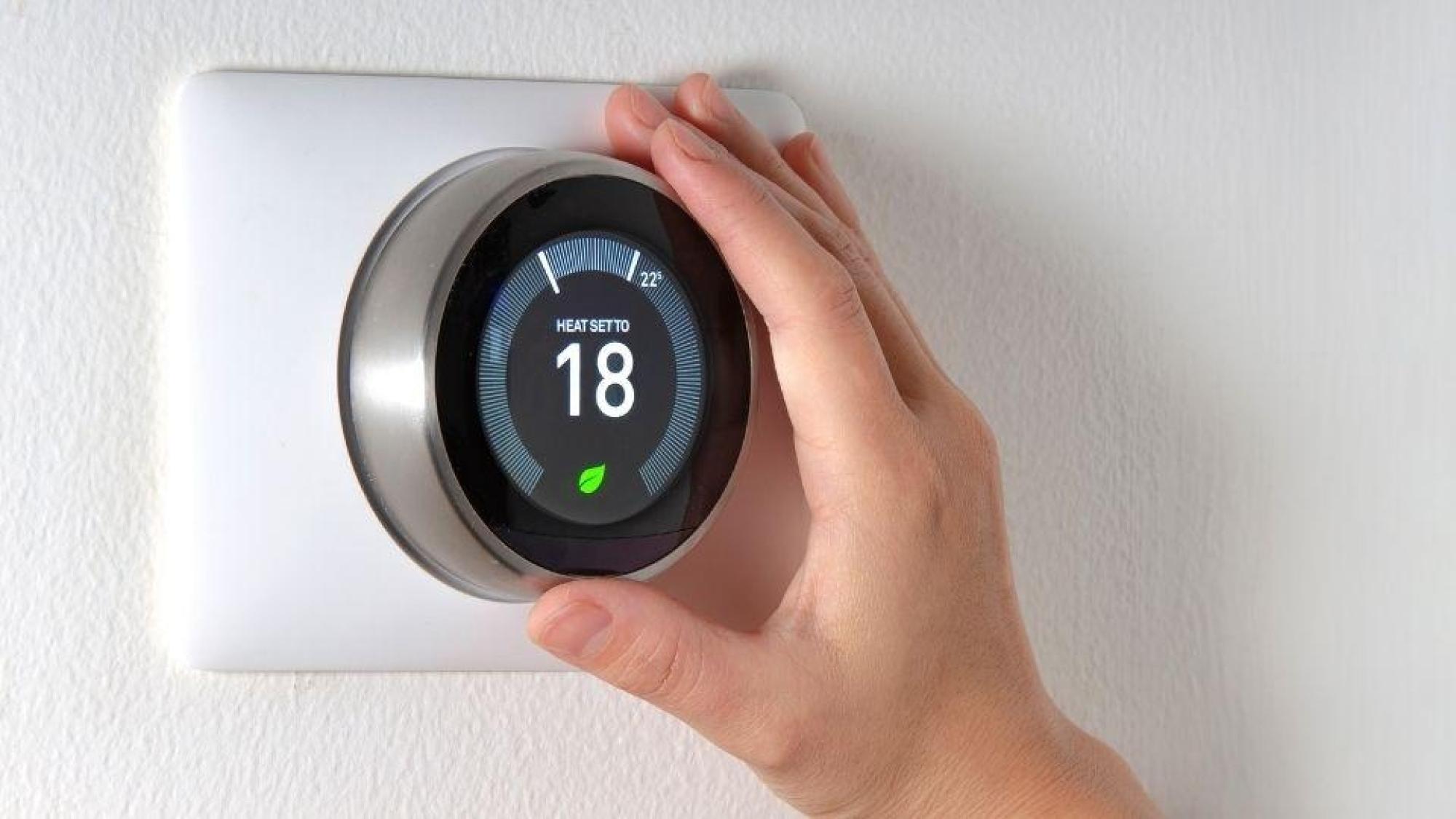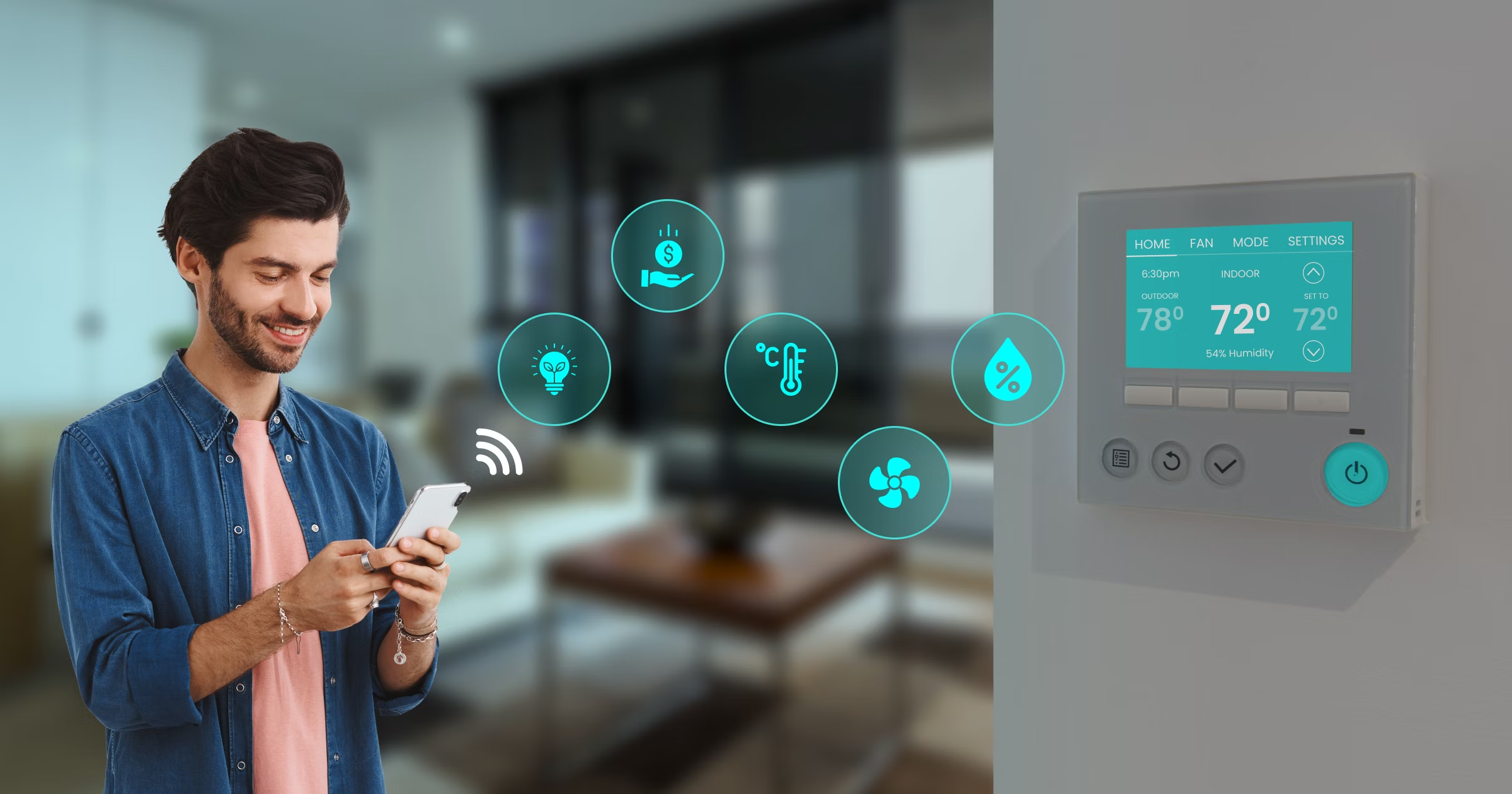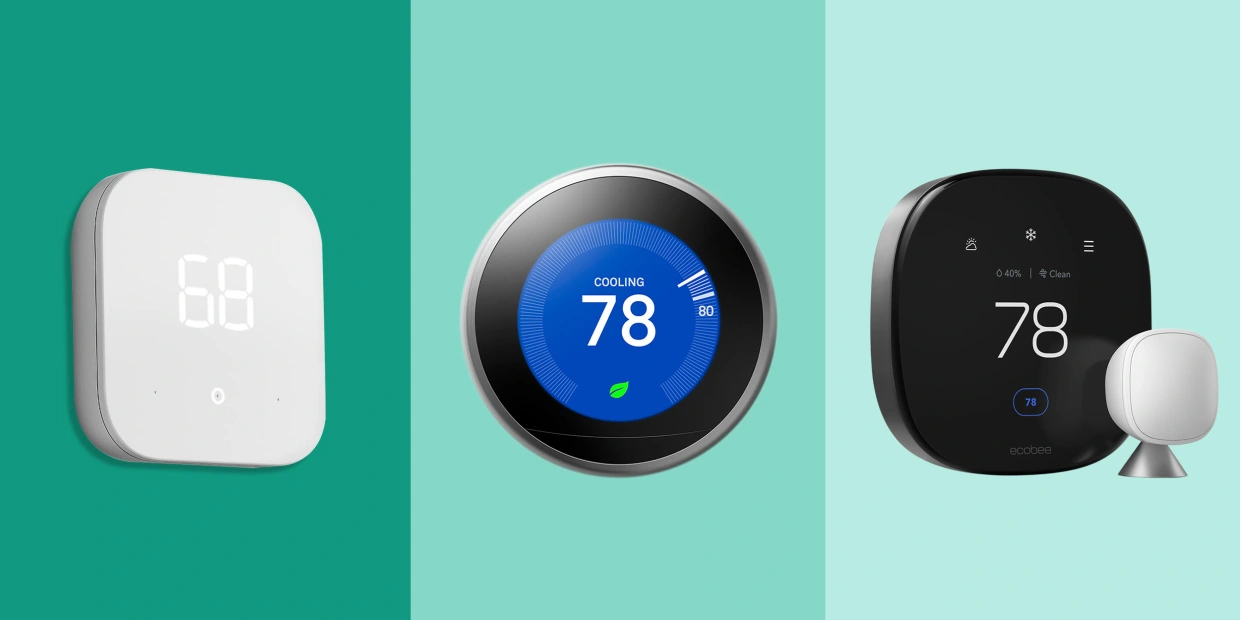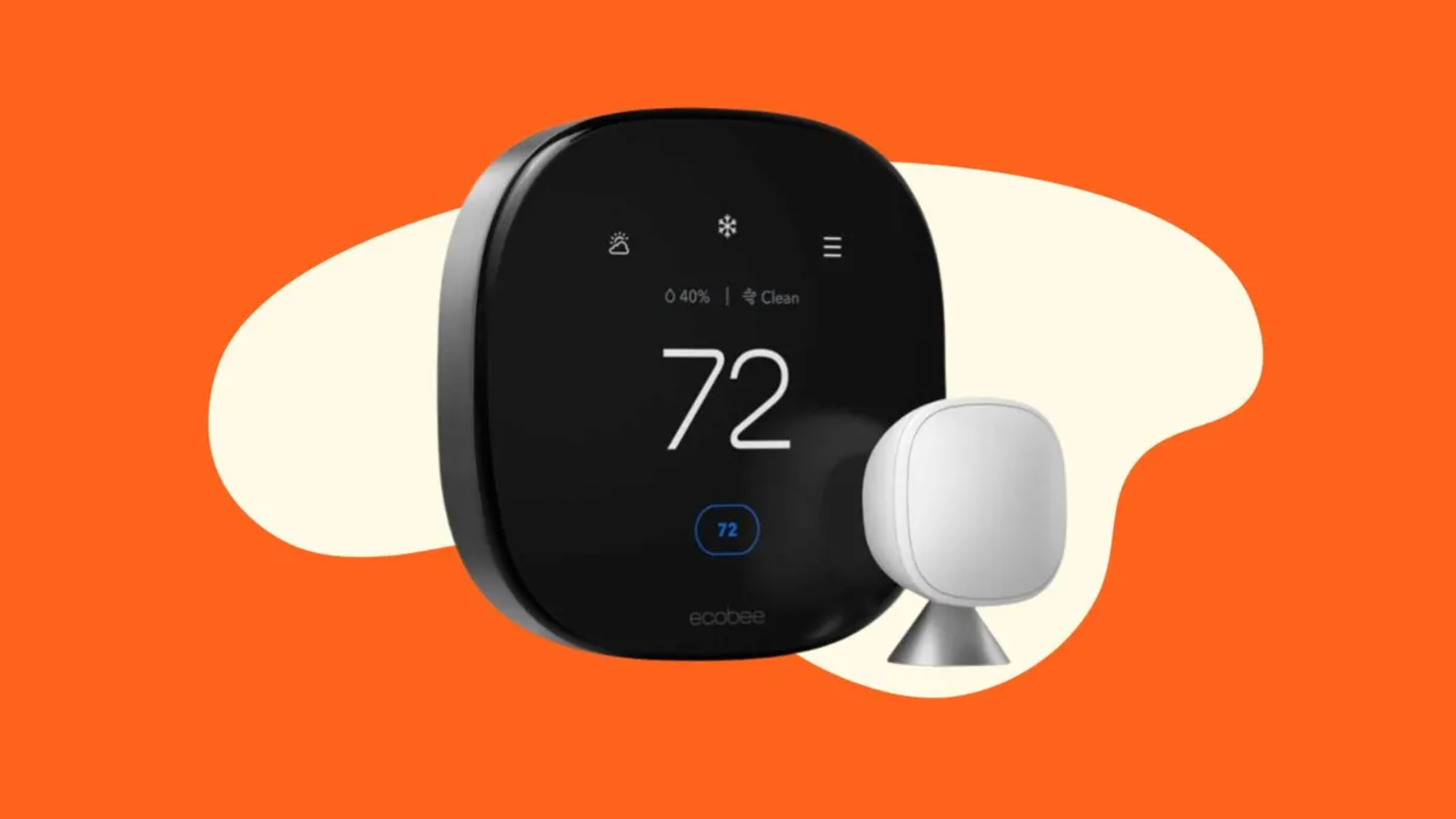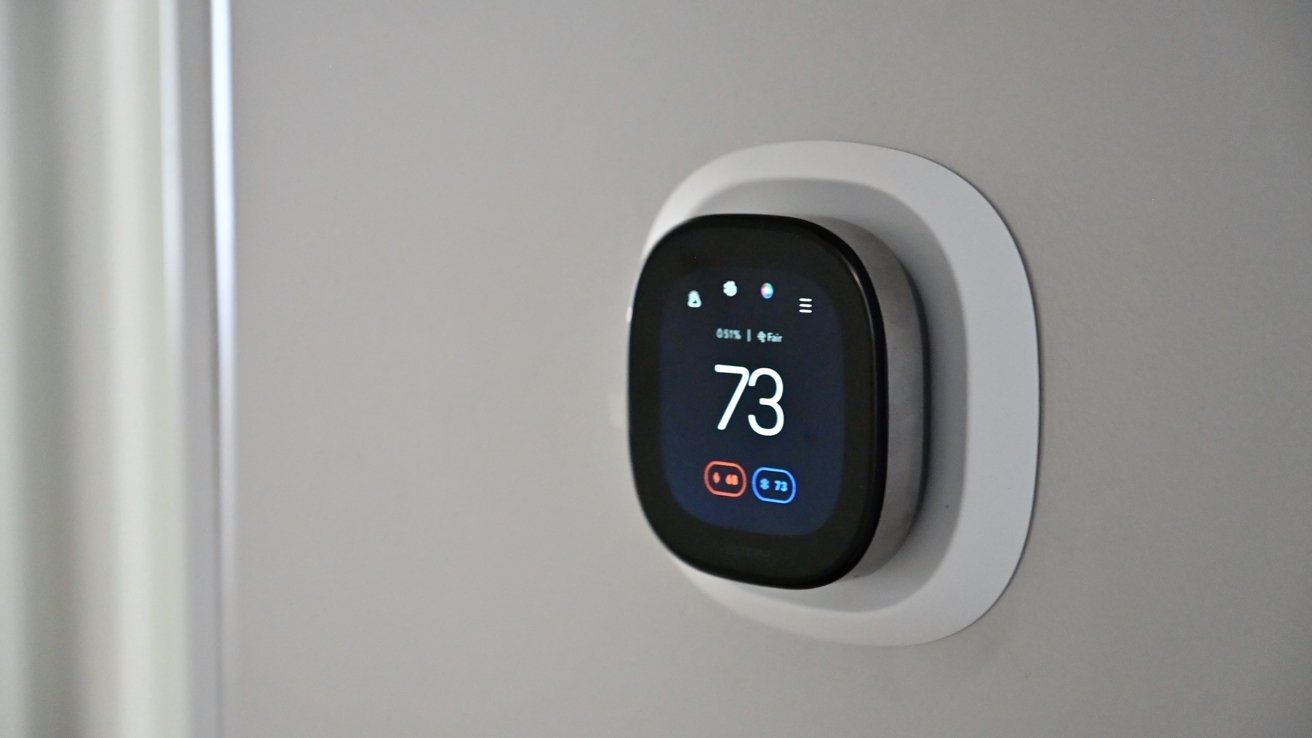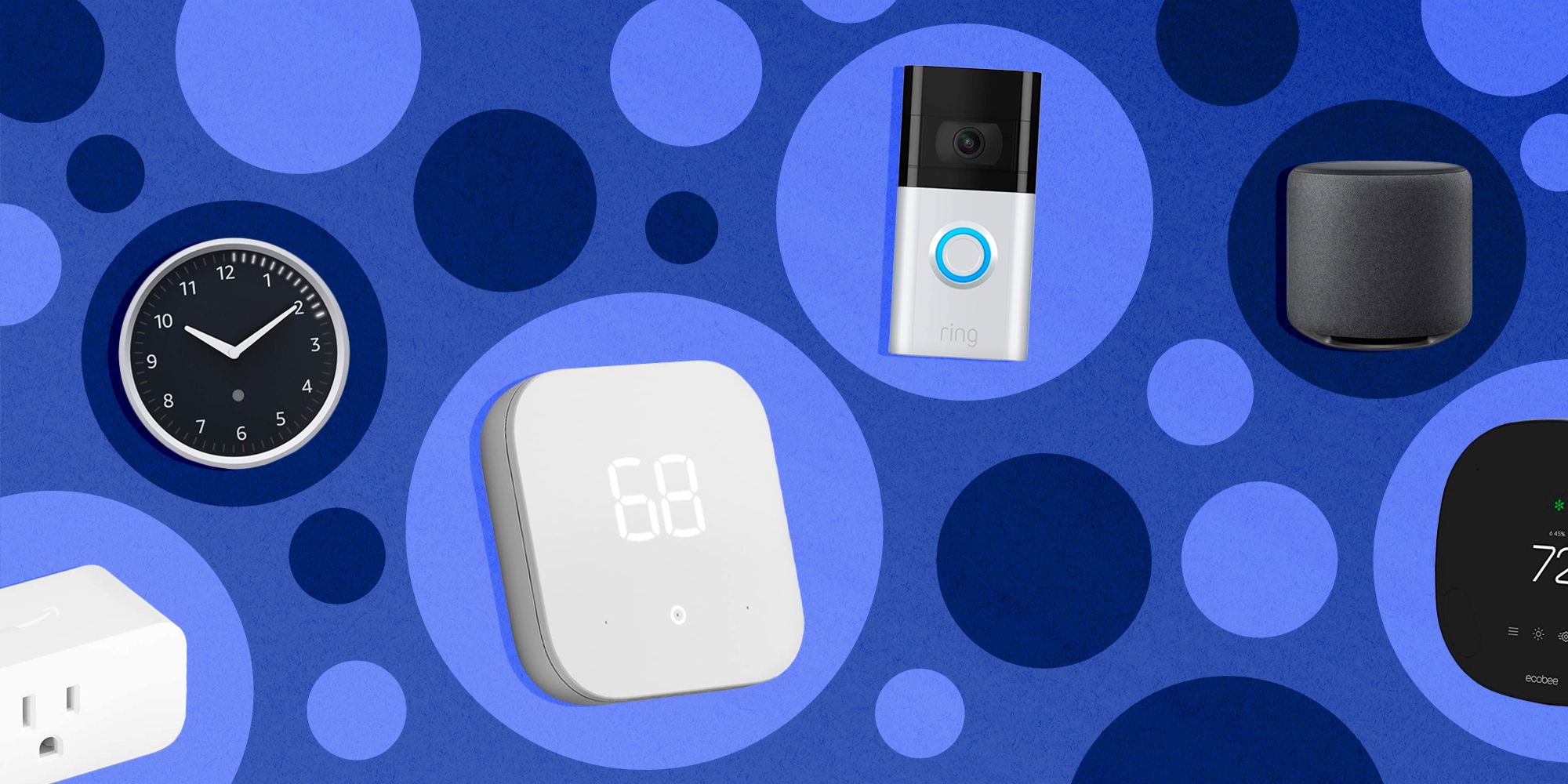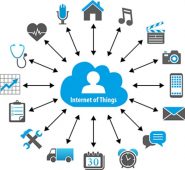**
Introduction
**
Welcome to the era of smart homes, where technology seamlessly integrates with everyday living to enhance comfort, convenience, and efficiency. Among the array of smart devices revolutionizing modern households, smart thermostats stand out as a pivotal innovation. These intelligent devices offer advanced temperature control, energy conservation, and remote accessibility, empowering homeowners to optimize their indoor climate and reduce energy consumption.
In this article, we delve into the realm of smart thermostats to explore a fundamental aspect of their functionality: data usage. Understanding the data consumption of these devices is crucial for homeowners seeking to manage their internet usage effectively while enjoying the benefits of smart technology. Whether you are considering integrating a smart thermostat into your home or already have one, gaining insights into its data usage will enable you to make informed decisions and maximize its potential.
As we embark on this exploration, we will unravel the intricacies of smart thermostat technology, dissect the factors influencing data usage, and provide practical tips for optimizing data consumption. By the end of this journey, you will emerge equipped with the knowledge to harness the full potential of your smart thermostat while maintaining efficient data management.
Join us as we navigate the digital landscape of smart homes and uncover the nuances of smart thermostat data usage, empowering you to embrace the future of home automation with confidence and clarity.
What is a Smart Thermostat?
A smart thermostat represents a significant evolution in the realm of home climate control. Unlike traditional thermostats that rely on manual adjustments and preset schedules, smart thermostats leverage cutting-edge technology to offer a range of intelligent features that optimize energy efficiency and user convenience.
At its core, a smart thermostat serves as a central hub for regulating indoor temperatures, seamlessly integrating with heating, ventilation, and air conditioning (HVAC) systems. What sets smart thermostats apart is their ability to learn and adapt to users’ preferences, thereby creating personalized temperature settings that align with occupants’ schedules and comfort requirements.
One of the defining characteristics of smart thermostats is their connectivity to Wi-Fi networks, enabling remote access and control via dedicated mobile applications or web interfaces. This connectivity empowers users to adjust temperature settings, monitor energy usage, and receive real-time updates from anywhere, providing unparalleled flexibility and convenience.
Moreover, smart thermostats often incorporate advanced sensors and algorithms to optimize energy consumption by adjusting temperature settings based on factors such as occupancy, ambient conditions, and weather forecasts. By intelligently managing heating and cooling cycles, these devices contribute to significant energy savings and environmental sustainability.
Furthermore, smart thermostats frequently feature integration with smart home ecosystems, allowing seamless interaction with other connected devices such as lighting systems, voice assistants, and home security platforms. This interoperability enhances the overall smart home experience, enabling comprehensive automation and synchronization of various home functions.
Overall, a smart thermostat embodies the convergence of sophisticated technology and practical utility, offering intuitive control, energy efficiency, and personalized comfort. Its seamless connectivity, adaptive capabilities, and integration with smart home ecosystems position it as a cornerstone of modern home automation, empowering users to optimize their living spaces with unparalleled ease and efficiency.
How Does a Smart Thermostat Use Data?
Smart thermostats utilize data in multifaceted ways to deliver their advanced functionality and user benefits. The primary mechanism through which data is leveraged revolves around the device’s connectivity to the internet, typically facilitated by Wi-Fi integration. This connectivity enables smart thermostats to exchange information with external servers, receive real-time updates, and allow remote access and control through dedicated applications or web interfaces.
One of the key data-driven aspects of smart thermostat operation is the continuous exchange of information with weather forecasting services. By accessing up-to-date weather data, smart thermostats can proactively adjust temperature settings based on anticipated environmental conditions, optimizing energy usage and indoor comfort. This real-time adaptation to weather variations ensures efficient climate control while minimizing energy wastage.
Furthermore, smart thermostats rely on data from internal sensors to monitor occupancy, ambient temperature, and humidity levels within the home environment. These sensors collect and analyze data to inform the thermostat’s decision-making process, enabling it to adjust temperature settings based on occupancy patterns and environmental factors. By intelligently responding to changes in occupancy and ambient conditions, smart thermostats optimize energy consumption and enhance user comfort.
Moreover, the data usage of smart thermostats extends to the collection and analysis of historical usage patterns. By aggregating data on temperature adjustments, occupancy trends, and energy consumption, these devices can generate insights into users’ behavior and preferences. This data-driven understanding allows smart thermostats to autonomously create personalized temperature schedules and optimize energy-efficient operation, aligning with users’ routines and comfort requirements.
Additionally, smart thermostats may leverage data for software updates and maintenance purposes. These devices routinely receive firmware updates and patches to enhance performance, security, and feature sets. Data usage in this context involves the transfer of update packages and diagnostic information, ensuring that the smart thermostat remains up to date and operates optimally.
In essence, the data utilization of smart thermostats encompasses a spectrum of functionalities, including real-time weather integration, sensor-driven environmental monitoring, historical usage analysis, and software maintenance. This comprehensive utilization of data underpins the intelligent operation and user-centric benefits of smart thermostat technology, empowering homeowners to achieve efficient climate control and energy management.
Factors Affecting Data Usage
The data usage of smart thermostats is influenced by various factors that collectively shape their connectivity, functionality, and operational efficiency. Understanding these factors is essential for homeowners seeking to manage their internet usage effectively while optimizing the performance of their smart thermostat.
1. Connectivity Type: The type of connectivity utilized by a smart thermostat significantly impacts its data usage. Wi-Fi-enabled thermostats rely on internet connectivity to exchange data with external servers and enable remote access, potentially consuming more data compared to non-Wi-Fi models. Additionally, the frequency of data exchange and the size of data packets transmitted over the network contribute to overall data usage.
2. Update Frequency: Smart thermostats regularly receive software updates and firmware patches to enhance performance, security, and feature sets. The frequency of these updates, along with their size, influences data consumption. Devices that undergo frequent updates may exhibit higher data usage compared to those with less frequent update cycles.
3. Remote Access and Control: The extent to which homeowners utilize remote access and control features affects data usage. Engaging with the smart thermostat through dedicated mobile applications or web interfaces incurs data consumption, particularly when making real-time adjustments, monitoring energy usage, or receiving updates from the device while away from home.
4. Weather Integration: Smart thermostats that actively incorporate real-time weather data into their operation consume data to access weather forecasts and updates. The frequency of data retrieval from weather services, as well as the granularity of weather information utilized for temperature adjustments, can impact overall data usage.
5. Sensor Monitoring: Internal sensors within smart thermostats continuously monitor occupancy, ambient temperature, and humidity levels, utilizing data to inform temperature adjustments and energy optimization. The frequency and granularity of sensor data collection contribute to the device’s data usage, especially in homes with dynamic occupancy patterns and environmental fluctuations.
6. Usage Analytics: Smart thermostats may employ data analytics to generate insights into users’ behavior, preferences, and energy consumption patterns. The collection, processing, and transmission of usage data for analytical purposes contribute to overall data usage, particularly in devices with advanced learning and adaptation capabilities.
7. Interoperability with Smart Home Ecosystems: Integration with smart home ecosystems and connected devices introduces additional data usage considerations. Smart thermostats that interact with other smart home components, such as lighting systems, voice assistants, and security platforms, may exchange data with these interconnected devices, impacting overall data consumption.
By comprehensively considering these factors, homeowners can gain a nuanced understanding of the elements influencing smart thermostat data usage. This awareness empowers users to make informed decisions regarding data management, connectivity preferences, and operational practices, ensuring an optimal balance between smart thermostat functionality and data efficiency.
How Much Data Does a Smart Thermostat Use?
The data consumption of a smart thermostat varies based on its specific features, operational characteristics, and user interactions. While the precise data usage can fluctuate depending on usage patterns and environmental factors, an estimation of the typical data consumption provides valuable insights for homeowners managing their internet usage.
On average, a smart thermostat utilizing Wi-Fi connectivity can consume approximately 50 to 150 megabytes (MB) of data per month under typical usage scenarios. This estimate encompasses regular data exchange for remote access and control, weather updates, software maintenance, and sensor-driven environmental monitoring. However, it is important to note that variations in data usage can occur based on the following factors:
- Usage Patterns: Homes with frequent remote interactions, real-time adjustments, and extensive utilization of smart thermostat features may experience higher data consumption compared to households with minimal remote access and control.
- Update Frequency: Smart thermostats that undergo frequent software updates and receive large firmware patches may exhibit elevated data usage, particularly if the updates are substantial in size and occur regularly.
- Weather-Driven Adjustments: Homes situated in regions with volatile weather conditions may witness increased data usage as smart thermostats actively retrieve and incorporate real-time weather data for proactive temperature adjustments.
- Sensor Monitoring Intensity: The frequency and granularity of sensor data collection and analysis within the smart thermostat can impact data usage, especially in homes with dynamic occupancy patterns and environmental fluctuations.
It is essential for homeowners to monitor their smart thermostat’s data usage periodically, leveraging built-in usage tracking features or network data monitoring tools provided by internet service providers. By staying informed about data consumption patterns, users can adjust their interaction with the smart thermostat and optimize settings to align with their data management preferences.
Furthermore, understanding the data usage of a smart thermostat facilitates informed decision-making when selecting an internet service plan. Homeowners can assess their overall household data requirements, accounting for the data consumption of smart thermostats alongside other connected devices, to ensure that their internet plan aligns with their usage needs.
In essence, while the typical data consumption of a smart thermostat falls within the range of 50 to 150 MB per month, variations based on usage patterns, update frequency, weather-driven adjustments, and sensor monitoring intensity necessitate individualized monitoring and management of data usage. By maintaining awareness of these factors, homeowners can effectively optimize their smart thermostat’s data consumption while leveraging its advanced capabilities for efficient climate control and energy management.
Tips for Managing Smart Thermostat Data Usage
Effectively managing smart thermostat data usage empowers homeowners to strike a balance between harnessing the device’s advanced features and optimizing internet consumption. By implementing practical strategies and leveraging built-in functionalities, users can proactively manage data usage while maximizing the benefits of smart thermostat technology.
1. Utilize Energy-Saving Features: Smart thermostats offer energy-saving modes, scheduling capabilities, and adaptive algorithms that optimize temperature settings based on occupancy and environmental conditions. Leveraging these features reduces the frequency of data-intensive adjustments and contributes to overall energy efficiency.
2. Monitor Remote Interactions: Periodically assess the frequency and duration of remote interactions with the smart thermostat. Minimizing unnecessary remote access and control sessions can mitigate data consumption, particularly for homes with limited internet bandwidth.
3. Optimize Update Settings: Smart thermostats often allow users to customize update settings, such as scheduling update installations during off-peak hours or specifying the frequency of update checks. Tailoring these settings can manage data usage associated with software updates.
4. Weather Data Configuration: Adjust the granularity and frequency of weather data integration within the smart thermostat’s settings. Fine-tuning weather-driven adjustments based on local climate patterns can optimize data usage while maintaining proactive temperature control.
5. Utilize Offline Features: Some smart thermostats offer offline functionality, allowing basic temperature control and scheduling without continuous internet connectivity. Leveraging offline features conserves data usage while ensuring essential climate control capabilities.
6. Leverage Usage Reports: Many smart thermostats provide usage reports and insights into data consumption patterns. Regularly reviewing these reports enables users to identify data-intensive activities and adjust their interaction with the device accordingly.
7. Network Monitoring Tools: Employ network monitoring tools provided by internet service providers or third-party applications to track the smart thermostat’s data usage. This proactive approach facilitates real-time awareness of data consumption and informs adjustments to usage patterns.
8. Select Appropriate Internet Plan: Assess the overall data requirements of the household, considering the data consumption of smart thermostats alongside other connected devices. Select an internet plan that aligns with the household’s usage needs, ensuring sufficient bandwidth for smart thermostat operation.
By implementing these tips, homeowners can effectively manage smart thermostat data usage, optimizing internet consumption while maximizing the device’s energy-saving capabilities and user convenience. Proactive data management empowers users to embrace the full potential of smart thermostat technology while maintaining efficient internet usage within their households.
Conclusion
Embarking on the journey of smart thermostat ownership unveils a realm of innovative technology, energy efficiency, and user-centric control. The convergence of intelligent features, remote accessibility, and seamless integration with smart home ecosystems positions smart thermostats as indispensable components of modern home automation, empowering homeowners to optimize their indoor climate and reduce energy consumption with unparalleled ease and efficiency.
As we navigate the digital landscape of smart homes, understanding the data usage of smart thermostats emerges as a crucial element in the quest for efficient internet management and informed decision-making. The multifaceted utilization of data, encompassing weather integration, sensor monitoring, usage analytics, and software maintenance, underscores the intelligent operation and user benefits of smart thermostat technology.
By comprehensively exploring the factors influencing data usage and estimating the typical data consumption of smart thermostats, homeowners gain valuable insights into managing their internet usage effectively while maximizing the benefits of smart technology. Implementing practical tips for data management, such as leveraging energy-saving features, monitoring remote interactions, and optimizing update settings, empowers users to proactively balance advanced functionality with efficient data consumption.
In essence, the journey of smart thermostat ownership transcends mere climate control, offering a gateway to sustainable energy practices, personalized comfort, and seamless home automation. By embracing the nuances of smart thermostat data usage and implementing informed strategies for data management, homeowners can unlock the full potential of these intelligent devices while maintaining efficient internet usage within their households.
Join us in embracing the future of home automation, where smart thermostats serve as catalysts for energy efficiency, user empowerment, and the seamless fusion of technology with everyday living. With a nuanced understanding of data usage and proactive management strategies, homeowners can embark on this journey with confidence, clarity, and a commitment to optimizing their smart thermostat’s potential while preserving efficient internet usage.







